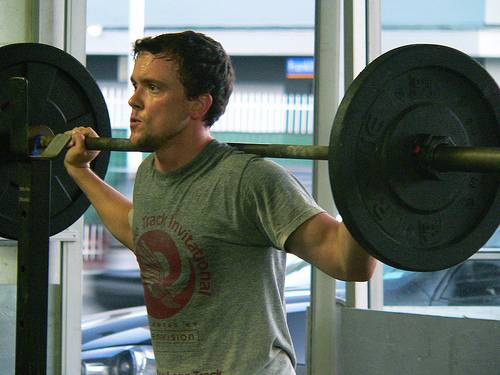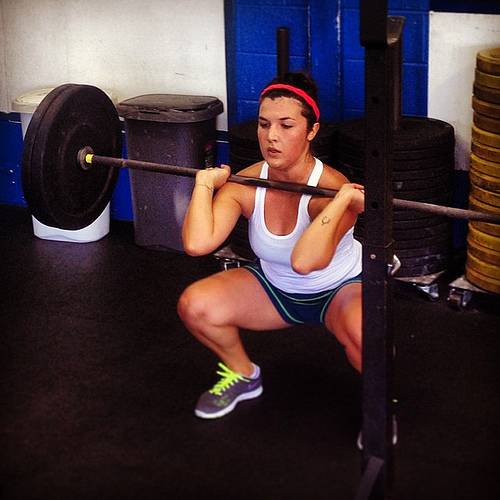Hey, you. Why don’t you put down that barbell for a few minutes? Let’s catch up. I see you in here all the time, training hard – harder than most, in fact. Which is why I wanted to chat with you. I see you making all the same mistakes that I have done and that I have seen, and it’s killing me (not to mention killing you).
I think there’s a few aspects of your training that could do with a little shift in perspective. Let’s grab a coffee and take a look at how we can make your training work harder for you.
1. Instead of Mobility, Think Targeted Mobility
Mobility is not fun. And it’s definitely not as fun as lifting. But you do it anyway, because you know it’s good for you. That’s cool. You’re doing the hard part. So why waste your time on the same drills everyone else does? It’s time to start thinking about you. Assess your own individual mobility requirements, or even better, ask a coach who knows what he or she is talking about to help you make that assessment. Perform mobility drills with the most “bang for the buck” for you in the limited time you have. Test before and retest after each drill so you can see and feel the benefit for yourself. Understand these drills may change in priority. As you improve mobility in one area, another that you haven’t been giving as much attention to up until now may need more love.
2. Instead of Scaling for Now, Think Scaling for the Future
Why do you scale? To keep the intensity as high it should be? To be able to perform the movements safely? Simply to be able to do the same workout as everybody else? All legitimate reasons. But along with these, consider you are not just scaling for now, you are scaling for the future. Scaling should be progressive, both in terms of the method of scaling, and the ability to progressively lessen the scaling as time goes on. If the scaling option you chose doesn’t help you to actually improve at the movement itself, and doesn’t lend itself to progression away from the scaling and towards the real deal, then you need to reassess your concepts of scaling.
3. Instead of High-Level Skills, Think Base-Level Strength
 Muscle-ups are definitely fun. And so is all that cool handstand stuff. But do you need to concentrate on them so hard at this stage? If these high-level skills are genuinely likely to be coming up in a competition for you, by all means treat them as an important goal. But training them as much as you do is taking time, energy, and recovery potential away from good, old-fashioned training. Depending on your strength levels, basic strength training could be far more productive to you achieving your chosen skill than you constantly practicing the skill.
Muscle-ups are definitely fun. And so is all that cool handstand stuff. But do you need to concentrate on them so hard at this stage? If these high-level skills are genuinely likely to be coming up in a competition for you, by all means treat them as an important goal. But training them as much as you do is taking time, energy, and recovery potential away from good, old-fashioned training. Depending on your strength levels, basic strength training could be far more productive to you achieving your chosen skill than you constantly practicing the skill.
4. Instead of Giant Leaps in Personal Bests, Think Incremental Steps
Massive personal bests are sexy. It’s impressive to say you increased your personal best by 15kg, isn’t it? Well, yes, of course increasing your max by that much is cool. But to me, it’s more impressive to see someone incrementally increasing his or her max by miniscule amounts week on week, month on month. It’s more sustainable for your body. It’s more sustainable in terms of continuous strength increases. And it’s more sustainable in terms of keeping the strength you have gained. (Ever wondered why you can never match that 1RM you hit at the end of that intense six-week program?)
5. Instead of Moving Quickly or Lifting Heavy, Think Quickly With Heavy
 There are some who can move quickly, and then there are a few who can move heavy weight. There are even a select few who can do both – move quickly and move heavy weight. But get any of these populations to move quickly with heavy weight and all of them will find it difficult. There needs to be some element of your strength and conditioning that is strength and conditioning. Pushing, pulling, and carrying heavy weights are good places to start. Hitting heavy lifts within a conditioning workout will help keep this side of things in check too.
There are some who can move quickly, and then there are a few who can move heavy weight. There are even a select few who can do both – move quickly and move heavy weight. But get any of these populations to move quickly with heavy weight and all of them will find it difficult. There needs to be some element of your strength and conditioning that is strength and conditioning. Pushing, pulling, and carrying heavy weights are good places to start. Hitting heavy lifts within a conditioning workout will help keep this side of things in check too.
6. Instead of Lifting More Weight, Think Getting Stronger
It’s not about lifting more weight. It’s about getting stronger. Lifting more weight is a by-product of getting stronger. I’m not here to start an argument about correlation and causation, but to point to the fact that unless you are a competitive lifter the focus should not be on lifting more weight as the be-all-and-end-all. For most of us, and even those who lift competitively, the point of doing this is to get steadily stronger, and to continue being able to do so. Sometimes lifting more weight is the answer to this. Sometimes it will take a step or two back in weight to get stronger in the correct manner. Sometimes the answer will lie in working at sub-maximal weights or in training partial movements, or variations of the movement. Sometimes work on mobility is required. Nutrition and recovery also play a big part. There are many variables involved in getting stronger. Lifting more weight is just one of them.
7. Instead of Competitions, Think Training Sessions
There are many good reasons to compete – the experience, the thrill, and the chance to test out everything you have been training for, for starters. And there is no shortage of opportunities to compete. I know it’s tempting to get in as many competitions as possible, but there’s another way to think about it. How does this fit in with your goals? Instead of thinking about how many competitions you can fit in during the year, think about how many training sessions you can fit in throughout the year. Training sessions often suffer due to resting before and after a competition. Shifting your perspective can help you work out which competitions are actually priorities and which would be better replaced with solid training sessions.
8. Instead of a Plan for the Month, Think on a Plan for the Year
 Having a focus for the month is good. It helps to focus the mind – deciding what to train, deciding when to train, and deciding to stick to a solid nutritional strategy. What is even better is when the plan for the month is part of a bigger plan for the year. It’s not particularly effective planning to work on getting stronger one month, getting fitter another month, getting stronger again the next month, and getting faster the month after that (as well as a bit stronger). This needs to be a part of a yearly cycle that takes into account competitions, main goals for the year, and personal circumstances. Your year (the macrocycle) needs to be split up into phases, and your plans for the month (the mesoscyle) will come from that. You wouldn’t plan your projects, holidays, or budgets on a month-by-month basis, so why your training?
Having a focus for the month is good. It helps to focus the mind – deciding what to train, deciding when to train, and deciding to stick to a solid nutritional strategy. What is even better is when the plan for the month is part of a bigger plan for the year. It’s not particularly effective planning to work on getting stronger one month, getting fitter another month, getting stronger again the next month, and getting faster the month after that (as well as a bit stronger). This needs to be a part of a yearly cycle that takes into account competitions, main goals for the year, and personal circumstances. Your year (the macrocycle) needs to be split up into phases, and your plans for the month (the mesoscyle) will come from that. You wouldn’t plan your projects, holidays, or budgets on a month-by-month basis, so why your training?
9. Instead of Training Hard, Think Thinking Hard and Training Hard
I’m not saying don’t train hard. I’m just saying that often all it takes is a little shift in perspective to put that hard work to even better use. Make sure it’s not all about you working hard for your training. It needs to work hard for you, too.
Photos courtesy of CrossFit LA.






